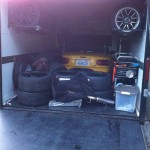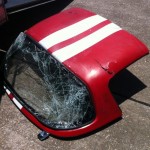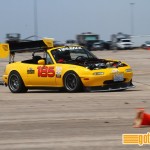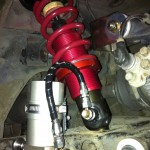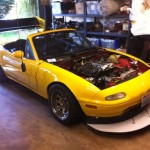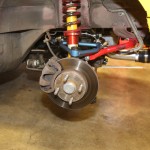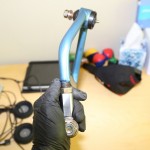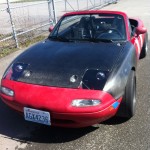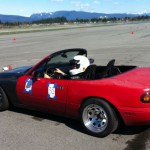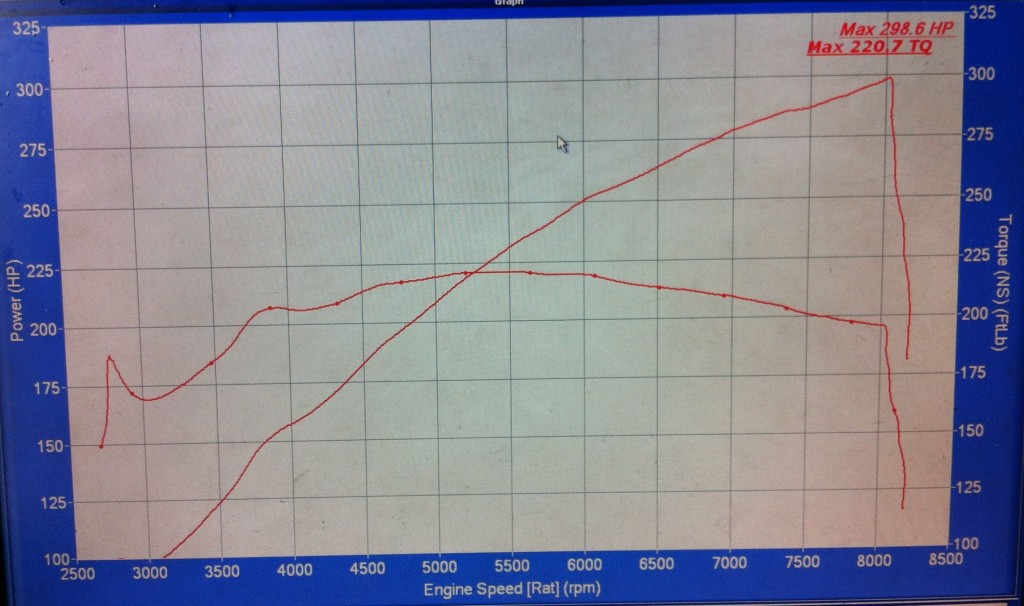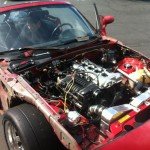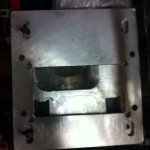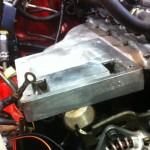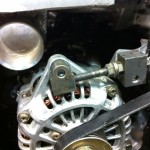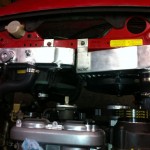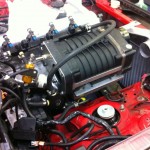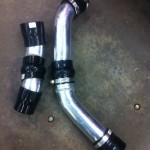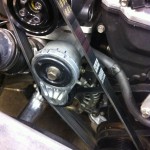The ProSolo was an interesting weekend. The course was the most annoyingly not-fun collection of ridiculously tight offsets and stupidly slow corners that I’ve ever driven. I feel like, in 8 years of autocrossing, I have to have driven a less fun course than that, but none come to mind. On the upsides, I managed to squeak out a win (barely — 0.009 seconds) and it highlighted a lot of things to focus on for the next phase of development for the car. Also, we had zero reliability issues with the car again, so I’m just waiting for something expensive to explode at this point…
One of the big obvious weaknesses this weekend was power application. I think that part of the problem with my current build is the forward weight bias (we’re at about 56% front right now), which isn’t leaving any weight on the rears to put power down. I’ve been working on a design to try out that will let me drop down to a 1.6 motor, non-intercooled, which would drop a ton of weight off the front end, and potentially give me room to ballast up the rear. In the interim, I need to explore a fuel cell so we can run less fuel without starving, allowing me to ballast up the rear a bit. I’m starting to wonder in general about just running more fuel after seeing Sam Strano, a man who is already heavily ballasted, running a full tank of fuel in his SS C6 Corvette, because the extra power application he gets out of the weight over the rear is worth the weight gain from the gas.
An unrelated huge problem this weekend was that my front splitter wasn’t playing nice with the Pro light sensors. I could get the car to “stage” in a couple different places, and it was very hard to tell which one of the two places I was staged in. As a result, when runs really mattered, I had to run extremely conservative lights (7xx-8xx) just to make sure I wouldn’t redlight. If I’d hit the deep stage hot spot, then I’d still redlight even waiting that long (see my first run of the challenge, for example — 498 redlight, and I didn’t even start to release the clutch until right before the GREEN light came on, so I must have been deep staged millimeters from the next sensor…) I’ve emailed Howard Duncan to ask how high the lights are, so I can make some “endplates” for my splitter to make sure that I hit the sensors in a reliable place at the next event. This problem made every run an unpredictable nightmare.
I also need to just learn how to launch. I cut everything from a 1.935 to mid 2.2s 60-ft times all weekend, mostly doing around 2.10ish, which is pretty terrible. On low grip asphalt, even after the course rubbers in, the car has enough torque to break the rears loose at basically any point in first gear, so it’s extremely hard to find the balance between a little bit of wheelspin and way too much wheelspin. I’ll hopefully learn eventually, but until then I’ll be running almost STS 60 foots while I burn up expensive rubber.
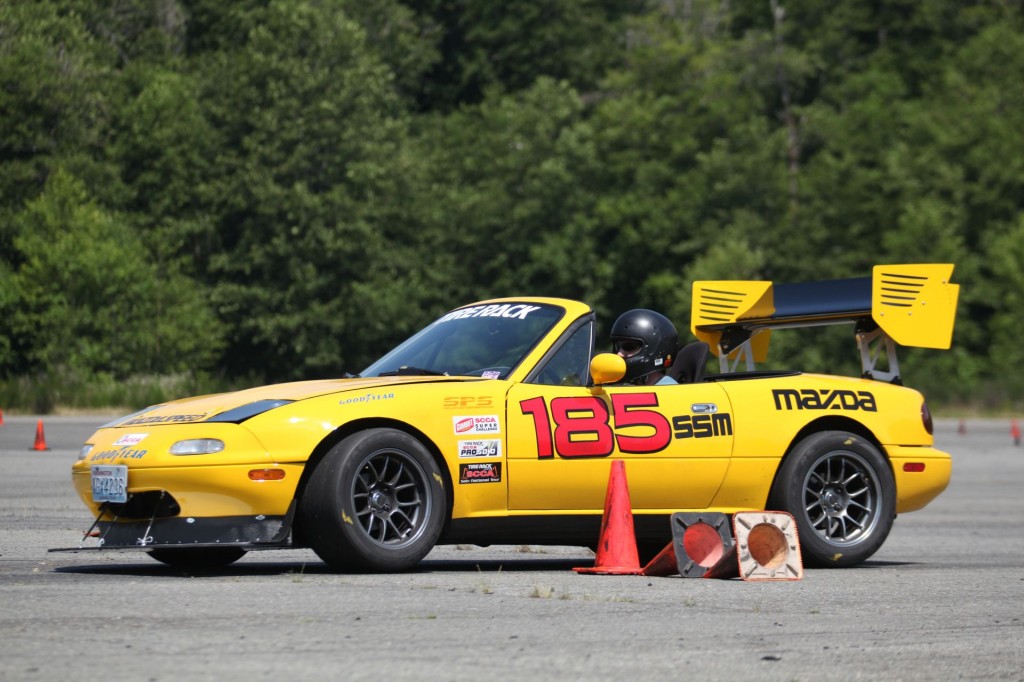

![miatapower330[1]](http://www.directedconsulting.com/destinationssm/wp-content/uploads/2012/07/miatapower3301-150x150.jpg)
